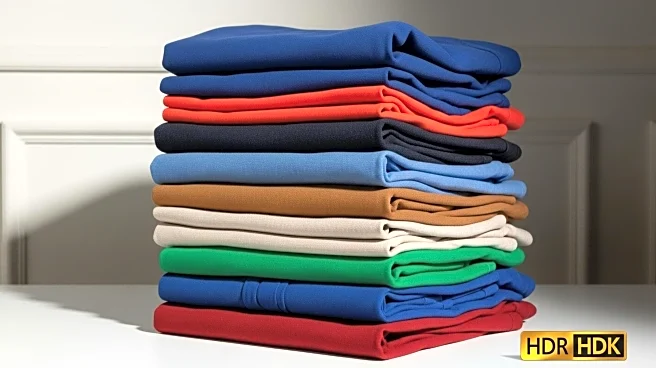What's Happening?
G-III Apparel Group has reported its Q2 2026 earnings, showcasing a notable performance in a challenging retail environment. The company achieved adjusted earnings per share (EPS) of $0.25, surpassing the Zacks Consensus Estimate of $0.10. Despite this positive outcome, G-III faced underlying challenges, including a 4.9% year-over-year decline in net sales to $613.3 million and a 9.2% contraction in gross profit to $250.5 million. Margins also slipped by 200 basis points to 40.8%. The company has revised its full-year guidance, projecting $3.02 billion in sales, down from the previous estimate of $3.14 billion. This adjustment reflects a cautious outlook due to retail partner uncertainty and escalating tariffs, which are expected to cost $155 million in fiscal 2026.
Why It's Important?
The earnings report highlights the resilience of G-III Apparel Group's high-margin brand-led model amid industry headwinds. The company's focus on owned brands, such as DKNY and Karl Lagerfeld, offers higher operating margins and licensing income compared to third-party licenses. This strategic shift mitigates risks from expiring licenses and positions G-III for sustainable growth. However, the company faces significant challenges, including a projected 40% decline in full-year adjusted EPS guidance, signaling deepening industry headwinds. Retail weakness and macroeconomic uncertainty could further pressure sales. Nonetheless, G-III's financial flexibility and focus on premium brands present potential upside if tariffs moderate or costs are successfully passed to consumers.
What's Next?
G-III Apparel Group plans to invest $40 million in digital tools, including 3D design and AI automation, to boost efficiency and e-commerce growth. These investments, coupled with disciplined inventory management, provide a buffer against macroeconomic volatility. The company aims to normalize and expand gross margins as low-margin licenses phase out and owned brands gain scale. The key question for investors is whether G-III can sustain its margin expansion amid persistent macroeconomic headwinds, a bet that hinges on the enduring power of its brand portfolio.











